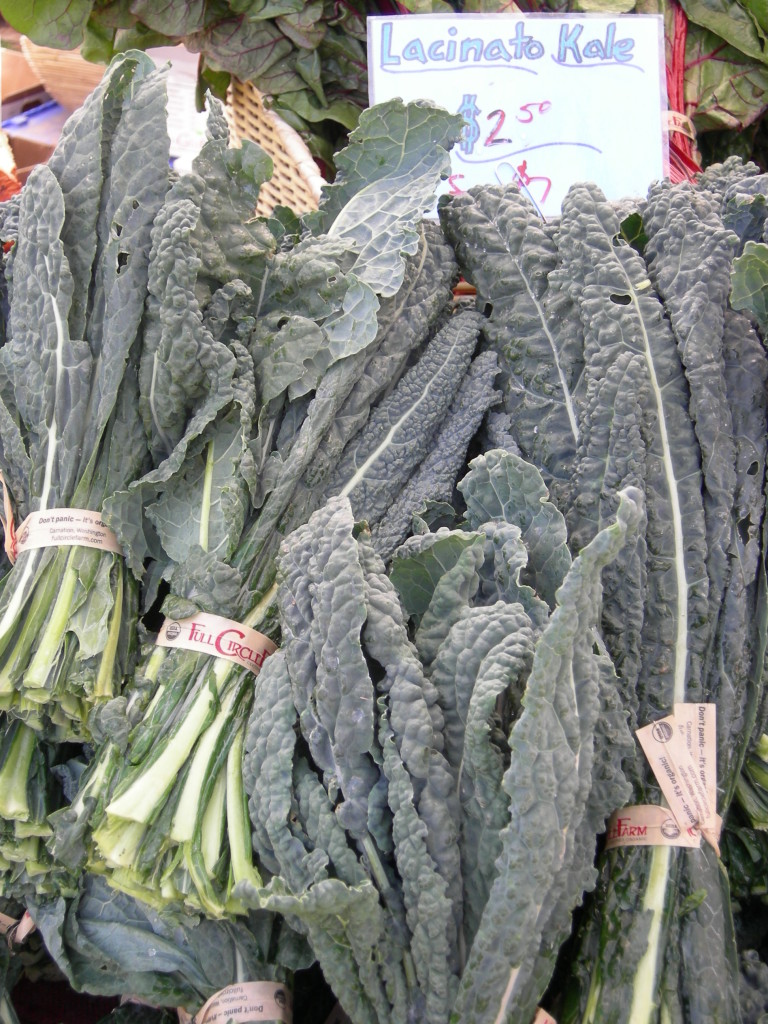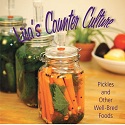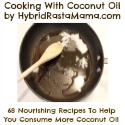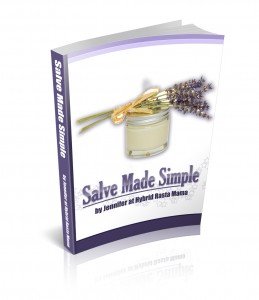Low Oxalate produce in season now!
Photo by Joe Mabel [GFDL or CC-BY-SA-3.0], via Wikimedia Commons
One of the hardest things about following a Low Oxalate Diet (LOD) is knowing what foods are safe to eat. (For those who don’t know about oxalates please see my post What are Oxalates?) There is no one group, like leafy greens, that you can just avoid based on what they look like and know you are safe. You need to go food by food and sometimes even variety by variety. Also for some foods preparation methods can greatly improve their oxalate profile, while for others it doesn’t have much of an impact.
So if you are hitting the farmers markets and shopping from local farms you need to know what you can eat. Right now leafy greens are everywhere and so are berries. Spring is the season! While you can’t eat spinach or chard on a LOD there are greens that are fine to eat. I included bananas and Avocados because while not local Avocados are now in season and bananas are treated like they are perpetually in season by most people. This is just limited to spring produce. Meats, dairy and eggs as a rule are all low oxalate but there are many other plants foods that I haven’t covered in this post because they are not in season where I live in the midwest. I’m highlighting the lowest in each category so that it is easy for you to find them.
As a reminder an adult on a LOD will want to be consuming a maximum of 40-60 mg of oxalate a day. (so 10-15 mg per meal and snack). Children need to consume proportionally less.
Fruit
Avocado 1.56 mg ox per 1 medium
Banana 8.02 mg ox per 1 medium
Blueberries 4.3 mg ox per 1/2 cup
Raspberries 11.62 mg ox per 1/2 cup
Strawberries 7.8 mg ox per 1/2 cup sliced
Vegetables
Boiling often reduces oxalate content in foods if you discard the water. Any value that is noted for boiling is assuming you cook until well done and discard the cooking water. Steaming has little to no effect on oxalate levels of foods. Some foods are not reduced by cooking much at all.
Arugula .71 mg ox per 1/2 cup
Asparagus 4.9 mg ox per 1/2 cup raw
Boc Choi 1.62 mg ox per 1/2 cup
Broccoli 2.5 mg ox per 1/2 cup boiled double that raw
Cabbages 1.2-3.2 mg ox per 1/2 cup raw depending on variety
Carrots 9.1 mg ox per 1/2 cup sliced and boiled raw is high.
Cauliflower 2.7 mg ox per 1/2 cup raw
Celery 7.0 mg ox per 1/2 cup raw diced
Collard greens 8.7 mg ox per 1/2 cup boiled
Cucumber .95 mg ox per 1/2 cup raw
Dino Kale 1.81 mg ox per 1/2 cup boiled (curly kale is high)
Green Onion 7.81 mg ox per 1/2 cup chopped
Lettuce .61-1.1 mg ox per 1/2 cup shredded or chopped depending on variety
Mustard Greens 3.15 mg ox per 1/2 cup boiled
Radish .08 mg ox per 3/4 in diameter raddish
Turnip 2.2 mg ox per 1/2 cup raw
Turnip Greens 4.75 mg oxalate per 1/2 cup raw
Yellow Squash 3.87 mg ox per 1/2 cup sliced, boiled
Zucchini 4.05 mg ox per 1/2 cup sliced, boiled
This isn’t a farmers market good but since so many on GAPS eat it I wanted to include it.
Bubbies Sauerkraut 8.09 mg ox per 1/2 cup
Some examples of greens to avoid
Red chard 920.5 mg ox per 1/2 cup steamed
374 mg ox per 1/2 cup boiled
Spinach 570 mg ox per 1/2 cup frozen then steamed
75 mg ox per 1/2 cup raw
130.73 mg ox per 1/2 cup boiled
Red Beets 43.32 mg ox per 1/2 cup
Gold Beets 139.15 mg ox per 1/2 cup raw
Carrots 15.27 mg ox per 1/2 cup grated
Carrot juice 10.86 mg ox per 1 cup
These values are taken from the list on the Trying Low Oxalates Yahoo group. You can see them and more if you join that group. Are there any in season foods that I missed that you are wondering about? Ask in the comments.
Shared on Traditional Tuesdays Nutritious and Delicious Blog Carnival 6/5/12.






















Hi Patty… I just downloaded the oxalate level food list spreadsheet from the file section of the Trying Low Oxalate group. I was tired of getting conflicting info from all the different sources I’ve seen. (I know I had recently asked you about dates, which were listed as high on one of the food lists you referenced in your “What Are Oxalates” article.) I didn’t know, until I read this article, that yellow squash has fewer oxalates than zucchini. (I have been making two separate dishes for dinner, to use both varieties of summer squash from our garden.) Looking over the, very lengthy, spreadsheet, my daughter was laughing when she saw that strawberries that are halved have lower oxalates. (Obviously not all of the info is completely accurate.) Is that the source from which you get your information? I saw they have numerous food lists, and I’m trying to simplify it down to the best info and then stick with it. Thanks. ~ Chris
The reason that halved strawberries have lower oxalate is because fewer of them can fit into a half cup than if they are sliced. Look at the weight of the food and you will see that they have the same per weight. This is the spread sheet that I use exclusively for oxalate values.
Also… while I’ve been avoiding carrots, they actually don’t seem very high (especially in comparison with the rest of the “to avoid” list). I see that you class carrot juice as high, but raspberries as low, while the juice has less per cup than the berries do per half cup. Or should carrots, in particular, be limited?
One difference is that you will often consume just a few raspberries as a part of a desert but carrot juice is often consumed in higher quantities. Carrots themselves also are often consumed in high quantities. Anything under 5 mg oxalate per serving is listed as low. Serving sizes can vary quite a bit for different foods though. If you boil carrots for a long time and discard the water that does significantly lower the oxalate of it. We do allow small bits of carrot (like some shreds in a salad) but we don’t juice it because it adds up so quickly. Spinach however is in another class and we avoid even traces of it. High is anything over 10 mg oxalate per serving. Clearly there is a wide range with some being in the 100’s of mg per serving. Remember you are trying to keep your oxalate below 40-60 mg a day. Every little bit adds up. For kids it is even lower. That only allows 10-15 mg of oxalate per meal total.
Is there any data for stinging nettle? Either cooked or in an infusion?
Nettle tea is very low .9 mg ox per cup. I’m not finding any numbers on consuming the nettles themselves though so I can’t say for sure. The oxalate level of infusions depends on how much soluible oxalate is in the food but not all oxalate is soluible oxalate. Foods with higher ratio of soluible oxalate to insoluible will benefit more from boiling and discarding the water.
Hi Patty, Thanks so much for this post! I have emailed you before about oxalates as it is definitely one of my “issues.” I finally printed the list you recommended and have been using it exclusively. I cannot believe that I had been eating a soup made from green beans and parsley (two of the highest oxalate veggies!) for weeks. I have noticed HUGE changes after reducing oxalates…namely that my constant bloating is gone. I so appreciate all of your posts and insight. Thanks again.
I am so glad that it is helping! It can be so overwhelming but once you wrap your mind around it like any other dietary changes it can become normal.
Hi Patty,
I am delving into the topic of LOD after seeing Sarah Pope’s post about green smoothies and your responses, among others. I’m grateful to you for the valuable information you are sharing about your journey to health. It’s especially helpful to have the combination of GAPS and LOD.
I have a few questions I wonder if you know the answers to:
- Is Red Russian kale low/med/high in oxalates? It’s a broad leafed variety that I like to grow that has large, mostly flat leaves with a little bit of curl at the edges.
- Is homemade beet kvass high in oxalate or is it lower because you don’t consume the actual beet and the beet has been lacto-fermented?
- Does soaking almonds as described in Nourishing Traditions (soaking overnight in filtered water with sea salt and then dehydrating) reduce their oxalate content? If so, to what degree?
Thanks!
Beth
Hi Beth,
First soaking and fermenting seem to have little if any impact on oxalate content of foods so almonds that have been soaked and beet kvass are almost certainly still very high oxalate I am sorry to say. My younger daughter will react to oxalate consumption in an obvious way and would react to my eating just a couple of soaked almonds from what was passing through my breast milk to her.
I don’t know that Red Russian Kale has been tested. Curly Kale has as well as dinosaur kale. Curly was much higher than dinosaur kale. It can vary quite a bit between different varieties of the same food so you can’t assume from one variety what the values of another will be. That is one thing that makes the LOD so frustrating is that you need to know exactly what you are eating, including the variety, to have an accurate oxalate count on the food.
Thanks for the replies. I guess I’ll be ripping out my beet and chard plants and maybe even my Red Russian Kale and find some seedlings of dinosaur (aka lacinato kale, I think), arugula, turnip greens and mustard greens.
That’s remarkable about your baby’s immediate response to something like your eating just a couple of soaked almonds. I’m wondering, what’s your take on why this information has not been incorporated more into the general trad food knowledge base and things like the GAPS diet? Is it because it is relatively new area of research, testing and awareness in terms of just how great an impact these foods can have and how many health issues they can be involved with? I know that people like Kaayla Daniel have written about the many ways plants “bite back”. I’m getting the sense, though, that this is the tip of an iceberg. Perhaps it’s just another example of how the world of holistic nutrition is ever-evolving and expanding as we connect more of the dots over time.
Thanks so much for this blog! It helps very much with distilling information and helps me to focus on pieces at a time. Otherwise and can be quite overwelming! I would like to have a link from where you get the oxalate levels. I looked on the yahoo group, but could not find the list that matches the levels you have provided. For example, I always thought celery was high and was surprised to see that it is lower than carrots.
Sincerely,
theresa
This is the link. If you are a member of the group you can see it otherwise you will need to join. Also even after a year I find myself getting confused on the levels of various things and remembering wrong. For a long time I thought cumin was low but it is actually very high. Celery I was thinking was high but I too was surprised to look it up recently and see that it wasn’t nearly as high as I had been thinking. I am getting better about just looking things up instead of assuming or trying to remember even though that is a pain to do.
http://f1.grp.yahoofs.com/v1/wCK-TyBfNjVz3qTRtF1xwvd0CcGViuq6AWRQ3b_ivitgtcvYf2W7tlT33_CURGrJBP-Q0vcGSPIgEZ_e4O0FzzgKuGVhzxoWST24-g/Information%20about%20foods/Oxalate%20Spreadsheets/Oxalate%20Spreadsheet%2028%20Feb%202012.pdf
Thanks for that link but I couldn’t get it to work (and I joined the group recently). What’s the name of the document and what file is it in?
It is in the information about foods file. It is called Oxalate Spreadsheet Feb 28. There are a few versions, pdf, xls and others.
Got it, thanks! Here’s the exact location of these spreadsheets:
Files > Information about foods > Oxalate Spreadsheets
Thank you!
Thank you for sharing this, Patty! I’ve been on full GAPS for about a year and was diagnosed with Fibromyalgia last December. My pain symptoms had not really improved until I quit my stressful job, but I was still having major pain every once in a while. After reading your information about oxalates and finding out that carrots are very high, I realized I was drinking them in my broth everyday! As soon as I took them out of my broth recipe, Viola!, my pain level almost disappeared. So no wonder my pain was increasing even after I was on GAPS. Thanks so much! God Bless!
Hi Patty,
Quick oxalate question for you. I recently had the OAT test done and it showed that I was low in Vitamin C. I stopped taking a Vitamin C supplement awhile back because I read that it can covert into oxalates. How do you and your girls get enough Vitamin C? I found a supplement by the company Synergy called Pure Radiance C. It is made from berries and is a whole foods supplement. Would that be a good alternative? Since I am eating anti-candida, LOD, and GAPS, I am limited to zucchini, yellow squash, bok choy, and arugula…and I don’t think that I am getting enough Vitamin C. Thanks in advance for any insight! Also, I just started the fermented fish oil after reading about it on your site…good stuff!!
Hi Brianna,
One idea for getting enough vitamin C is lemon water. Fresh lemon juice has a lot of vitamin c and is allowed on LOD and anti-candida GAPS. Also Grapefruit essential oil is a good source of vitamin C and oils as a rule are lOD compliant as well as anti-candida. Be Young sells a high quality Grapefruit essential oil that I consume regularly for this purpose. If you join (for free) as a sharing partner your price will be about 20% less than retail. http://www.beyoungeo.com/9896 is where you can go to read more about it and sign up. I have some posts about essential oils. Intro to essential oils is a good place to start.
I read this article recently: http://www.westonaprice.org/food-features/the-role-of-oxalates-in-autism-and-chronic-disorders
“What about the controversy surrounding vitamin C therapy? Vitamin C has been shown to be very helpful in kids with autism, although theoretically vitamin C can form oxalates. I say theoretically. Vitamin C can increase your risk of kidney stones if you take extremely high doses, in the range of 100 grams (100,000 mg) a day.
“A double-blind study found that very high doses of vitamin C was very effective in reducing autistic symptoms. A study showed that a person taking 2000 mg (2 grams) of vitamin C a day for ninety days did not cause a significant effect or change in oxalate levels.
“Another study evaluated forty-five thousand men who took vitamin C and vitamin B6 over six years and examined the effect this supplementation had on their kidneys. In the six years of follow up they found 751 cases of kidney stones out of 45,000 men. There was no association, however, of vitamin C or vitamin B6 intake with the kidney stones. In fact, men who took more vitamin C had less risk of kidney stones than men who took less than 250 mg vitamin C.”
Vitamin C iv’s have been found to significantly increase oxalate levels. Many people with oxalate problems will never have a kidney stone. It seems to just be people with a weakness in their kidneys that also develop kidney stones so saying that they don’t get kidney stones from ingesting vitamin c doesn’t really mean much. And comparing people in a study based on their recall of how much vitamin c they took isn’t the most accurate way to study anything. How much other high oxalate foods were they eating? What is the state of their guts? How much oxalate do they absorb from their food? Do they have the oxalate degrading bacteria in their guts? What about other symptoms associated with oxalate build up like joint pain, brain fog, vulvar vestibulits? Could the people with the lowest intake of vitamin c be self limiting because they innately knew it was bad for them? Why do people choose to eat and drink and take what they take? For many symptoms that they can associate with certain foods will discourage their intake over time. For others addictions to certain foods will encourage their intake despite bad symptoms. To draw conclusions about the effects of different foods based on one health parameter of people who consumed large or small amounts of that food is hardly scientific. There are loads of confounding factors that can be at play that are being ignored.
Hi Patty, Thanks for your response. I already joined Be Young EO around Christmas time for the sale (and signed up with your name). I actually use the grapefruit essential oil topically (for spleen issues) but have never thought of ingesting it. Do you just put a drop in a glass of water and drink? How many drops per day? I will try lemon water although they always make my gums/teeth feel funny. I will try it though…better than loading myself up with oxalates. Thanks again!
Briana,
I’m not sure about dosage for the eo’s and vitamin c levels. I put a drop on the back of my hand and lick it off or put a drop into water. The be young liver cleanse would be a great source of vitamin c since it is 1/2 a lemon juiced, 1 drop lemon eo and 1 drop peppermint eo. The acid in the lemon juice is probably what makes your gums feel funny. Just drink some water afterward to rinse your mouth. Acid isn’t good for your teeth.
PattyLA on May 27, 2012 at 10:13 pm said:
“Hi Beth, First soaking and fermenting seem to have little if any impact on oxalate content of foods so almonds that have been soaked and beet kvass are almost certainly still very high oxalate I am sorry to say. My younger daughter will react to oxalate consumption in an obvious way and would react to my eating just a couple of soaked almonds from what was passing through my breast milk to her.”
“I don’t know that Red Russian Kale has been tested. Curly Kale has as well as dinosaur kale. Curly was much higher than dinosaur kale. It can vary quite a bit between different varieties of the same food so you can’t assume from one variety what the values of another will be. That is one thing that makes the LOD so frustrating is that you need to know exactly what you are eating, including the variety, to have an accurate oxalate count on the food.”
Almonds are high in oxalates and assorted phytates, but we Primal Blueprint people from http://www.MarksDailyApple.com do know from personal experimentation, that soaking/sprouting raw almonds & slipping the brown skins off the sprouts before processing them or before consumption, eliminates many/most of these anti-nutrients. Maybe you can test it since you have such a sensitive child that will be an ideal test barometer. I have a young boy too, but luckily he can eat anything he wants with no negative consequences. Allergies, to foods, pollen, pet dander or dust mites, are mistakes of the brain and immune system, & can be reversed, healed or at the very least vastly improved.
Don’t confuse oxalates with phytates. They are very different. No cooking or preparing process has been discovered that neutralizes oxalates. You can leach them out of some foods by boiling the food and then discarding the cooking water but they are not degraded or transformed in this process, simply removed. While it is true that soaking and sprouting makes seeds and nuts easier to digest that does not have an impact on their oxalate content. Also a problem with oxalates is not an immune system problem nor is it an allergy. It is simply that the gut is leaky and too much of this toxic food chemical crosses the gut into the blood stream and the body can’t keep up in detoxing it and has to store it instead.
I am assuming roasted veggies would have the same content as raw? Is that correct? We roast far more than we boil here :).
Thanks!
Yes roasted veggies will retain all of their oxalate from the raw state. However, be sure to measure them for volume when raw since roasted they tend to take up less room and so 1/2 a cup roasted will have higher oxalate than 1/2 cup raw since it actually has like 1 cup worth of raw veggie to make up that 1/2 cup roasted. Make sense?
Patty
Makes sense ;). Thanks!
Does peeling fruit/veggies (apples, zucchini, potatoes, cucumber, etc.) lessen oxalate content?
Thank you
In some in helps and in others it doesn’t make much of a difference. Please see the list in the yahoo group for information on oxalate values in various foods.